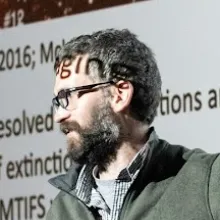Revisiting stellar masses in the JWST era
This projects aim to understand new methods for estimating the stellar masses of distant galaxies using imaging from the James Webb Space Telescope.
Research themes
Project status
Content navigation
About

The total mass in stars is a key parameter for studying galaxies as they evolve over cosmic time. Stellar masses are typically derived based on modelling stellar continuum emission, and rely on assumption of stellar metallicity and star-formation history. For nearby galaxies, measurements of stellar emission at 3-5 microns provides one of the most robust estimates of stellar mass as it probes the peak of emission from old stars, and is relatively insensitive to assumptions regarding stellar population properties. Application of this method to more distant galaxies has thus far been limited by the spatial resolution and sensitivity of existing observing facilities. With the launch and successful commissioning of the James Webb Space Telescope, we are entering an era where high-resolution imaging at wavelengths out to 18 microns will be available for large fractions of existing extragalactic deep fields. These data will probe the peak of stellar continuum emission for old stars out to redshifts 3-4, just 1-2 billion years after the big bang, and hold the potential to dramatically improve our estimates of stellar masses at these epochs.
The aim of this project is to revisit the estimation of stellar masses from near- and mid-infrared photometric data, extending work based on nearby galaxies to explore a range of star-formation histories and metallicities that are more typical of galaxies in the early Universe. As part of this project you will: 1) generate spectral models for a range of stellar population properties and star-formation histories, 2) use these models compute synthetic photometry matching the JWST filter compliment, 3) compare the recovery of stellar masses between different filter sets with an emphasis on the near- and mid-infrared.
This project will provide valuable experience working with modern astronomical data and develop your critical thinking skills while we advance our understanding of galaxy evolution. For more information about this research, or to discuss any related research area, please contact the supervisor.

